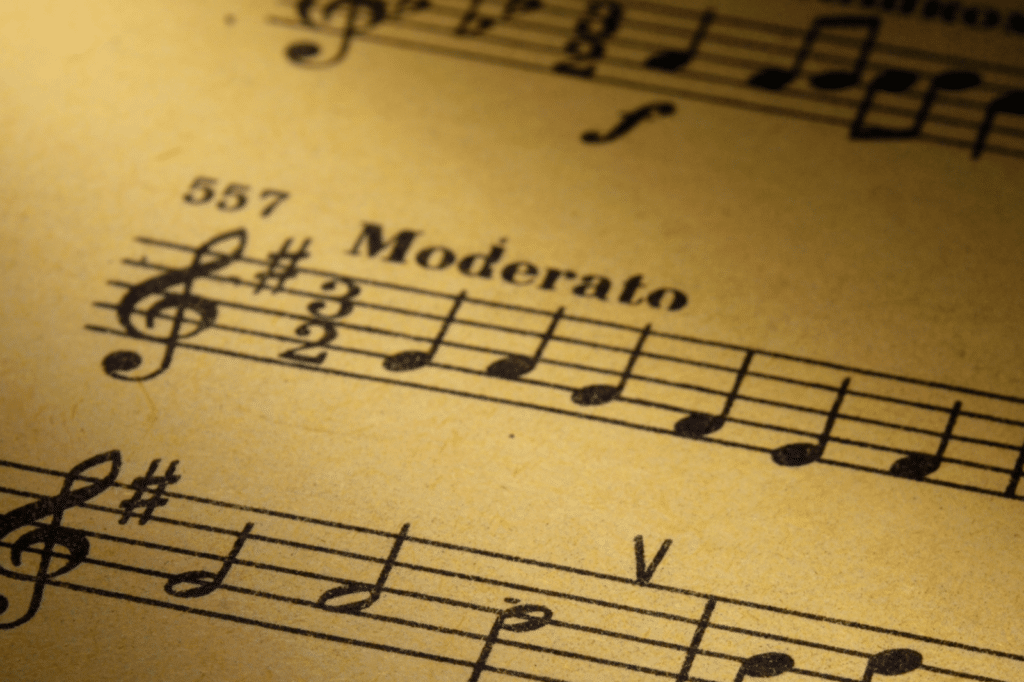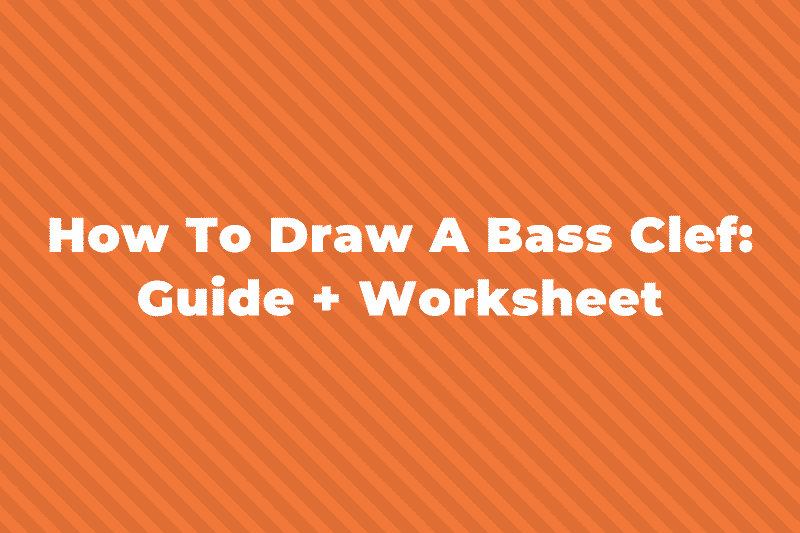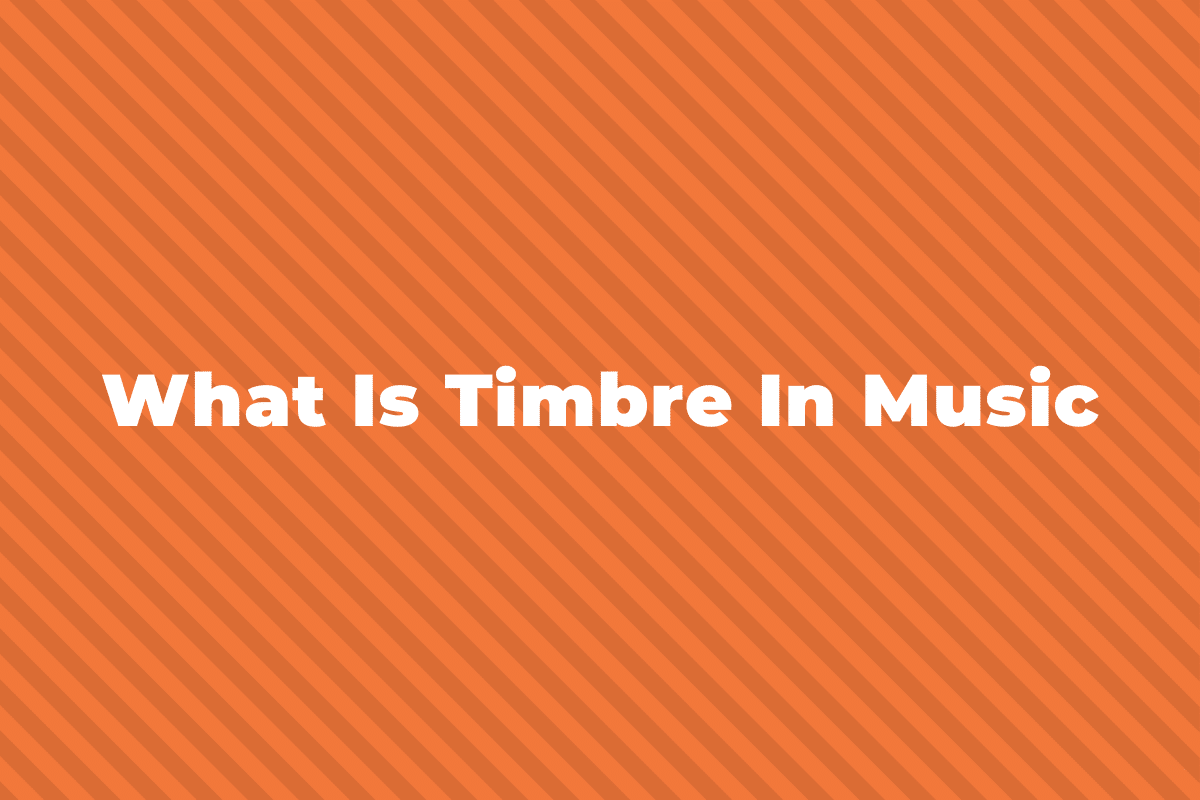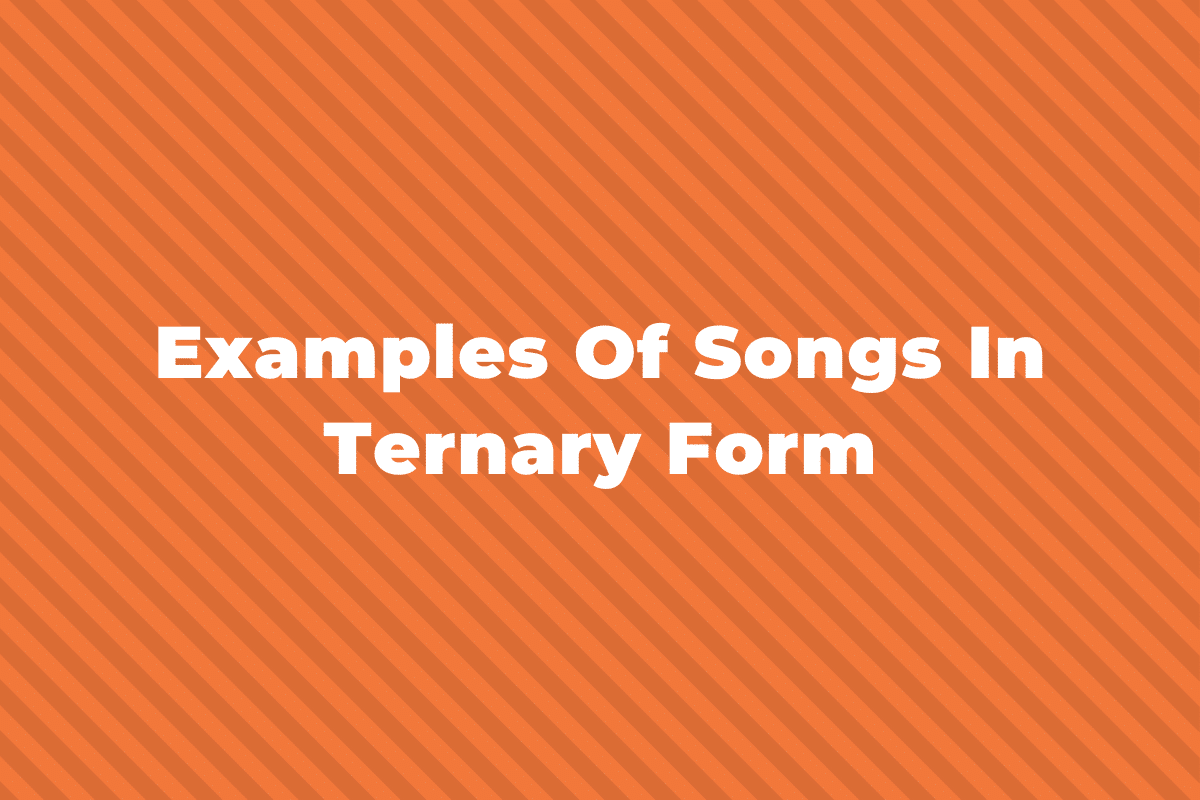Moderato is an Italian term that translates to “moderate” or “moderately.” In the realm of music, it’s used in the context of tempo. It signifies a tempo that strikes a balance between slow and fast.
So if you come across a piece of music marked as moderato, it implies that the piece should be played at a medium pace, not too fast and not too slow. It’s the Goldilocks of tempos — just right!
Other words that are often used to describe moderato include “controlled,” “balanced,” “measured,” “steady,” or “even-paced.”
How Fast Is Moderato?

We’ve established that moderato means to play moderately fast, but what does that actually mean in terms of tempo? One person’s interpretation of moderate will be completely different from another’s.
To move beyond subjective interpretations, we can use a metronome to put a more concrete number on how fast this tempo actually is.
Generally, the tempo for moderato is somewhere between 108 and 120 BPM (beats per minute). This range is like the comfortable pace of a relaxed jog — not too slow, yet not too fast.
Historical Context And Etymology Of Moderato
As we covered earlier, the term moderato finds its roots in the Italian word “moderato,” meaning “moderate” or “measured.” This origin aptly reflects the essence of the tempo — a balanced, controlled pace that is neither too fast nor too slow, embodying a sense of moderation in musical expression.
The introduction of moderato into musical terminology is believed to have occurred around the early Classical era, which began in the mid-18th century. This period marked a shift from the ornate and complex compositions of the Baroque era to a more refined and balanced style.
It was a time when composers began to explore the dynamics of soft and loud, as well as the contrasts between slow and fast tempos, in their compositions. The Classical era’s emphasis on clarity, symmetry, and balance made moderato an ideal tempo.
Related Terms To Moderato
- Andante Moderato: Slightly faster than andante, this term combines the moderate pace of moderato with the walking speed of andante (80 – 108 BPM).
- Allegro moderato: A tempo that is moderately fast; it’s a bit quicker than moderato but not as fast as a full allegro (116 – 120 BPM).
- Moderato con moto: Translating to “moderate with motion,” this indicates a tempo that is moderate yet with a noticeable forward movement.
- Moderato cantabile: Meaning “moderately in a singing style,” this tempo combines a moderate pace with a lyrical, melodic quality.
- Moderato assai: Essentially “quite moderate,” suggesting a tempo that is moderate but perhaps leaning towards a slightly brisker pace.
- Moderato maestoso: Combining moderato with a majestic feel, indicating a moderate pace that is grand and dignified.
- Moderato vivace: A blend of moderato and vivace, this indicates a tempo that is moderately fast with a lively character.
- Moderato molto: Meaning “very moderate,” this suggests a tempo that is emphatically moderate, perhaps slightly more restrained than standard moderato.
Examples Of Music At Moderato Tempo
Finally, here are some examples of music that are marked as moderato tempo.
“Jesu, Joy Of Man’s Desiring” By Johann Sebastian Bach
Bach’s “Jesu, Joy of Man’s Desiring” is a revered choral piece that often features a moderato tempo. This composition, known for its serene and uplifting melody, exemplifies Bach’s mastery in creating a harmonious and meditative atmosphere.
The piece is frequently played at weddings and other solemn occasions, where its moderate pace adds to the elegance and grace of the event.
The Minuet From Don Giovanni By Wolfgang Amadeus Mozart
The minuet from Mozart’s opera Don Giovanni is a splendid example of music set in a moderato tempo. This piece, characterized by its elegant and refined melodies, showcases the classical grace and balance typical of Mozart’s compositions.
Played at a moderate pace, this minuet provides a moment of poise and sophistication within the dramatic context of the opera, reflecting the social dances and customs of the era.
“Piano Concerto No. 2, Op. 18 I. Moderato” By Sergei Rachmaninoff
Sergei Rachmaninoff’s Piano Concerto No. 2, Op. 18 I. Moderato is a monumental work in the piano concerto repertoire.
The first movement marked as moderato begins with a series of hauntingly beautiful chords that set the stage for one of the most passionate and emotionally charged pieces in classical music.
This movement, with its rich melodies and complex harmonies, showcases Rachmaninoff’s unique blend of lyrical romanticism and virtuosic piano writing, all within the framework of a controlled, moderate tempo.



